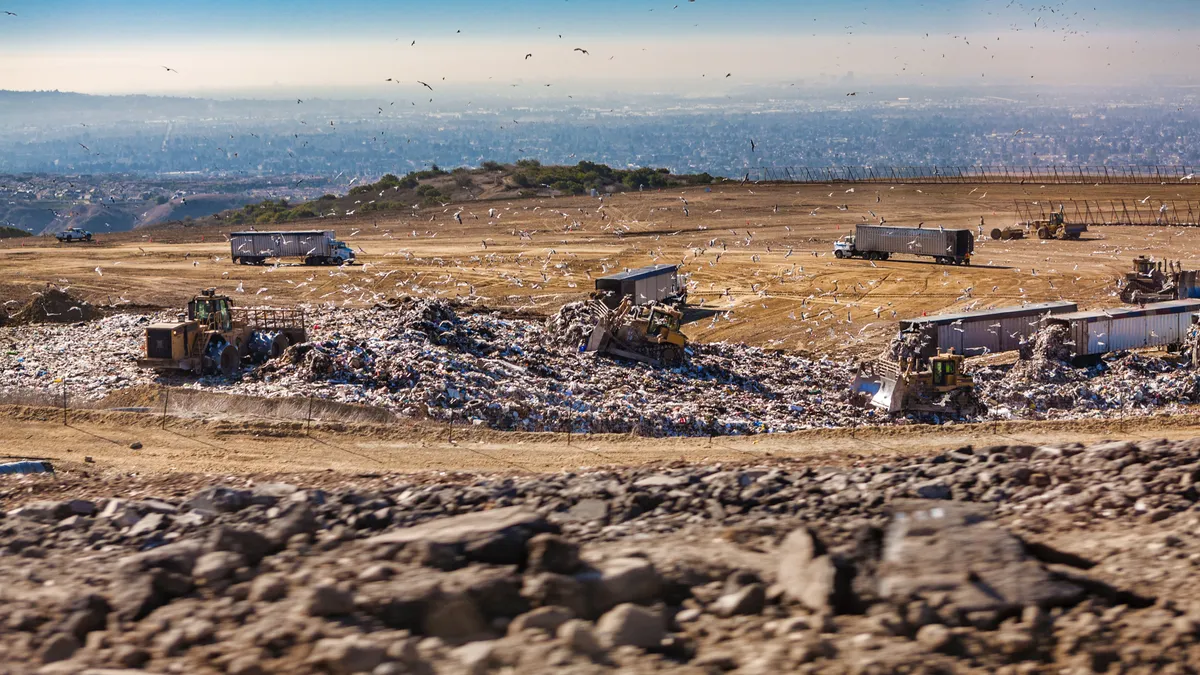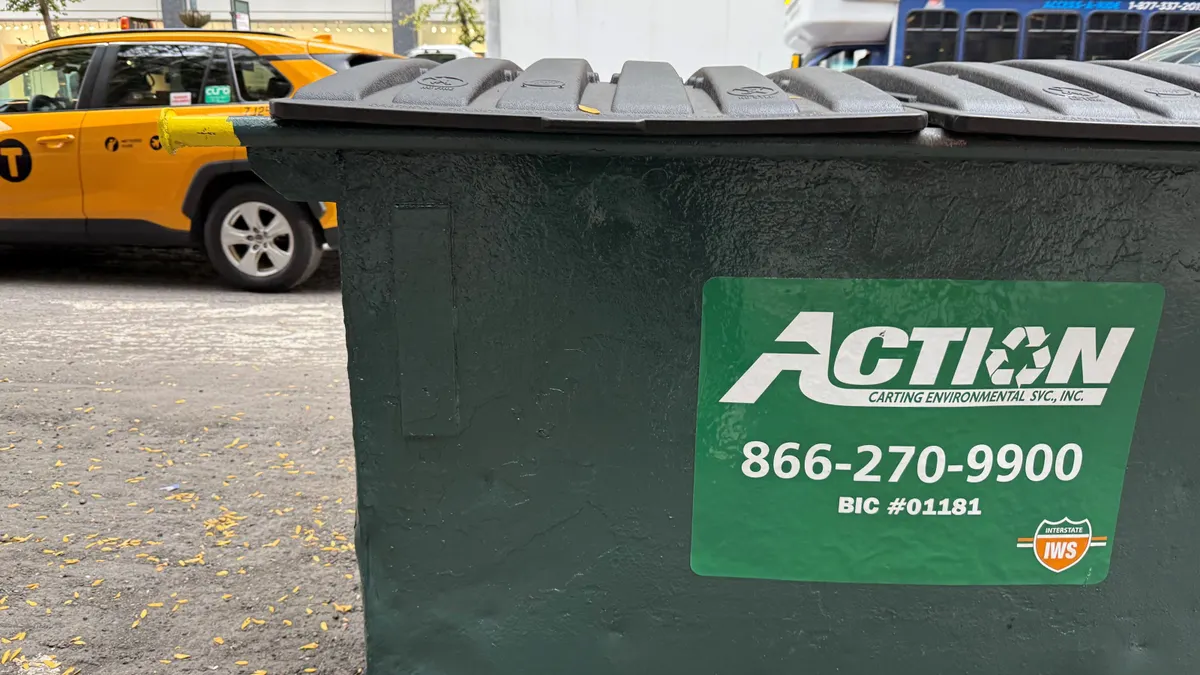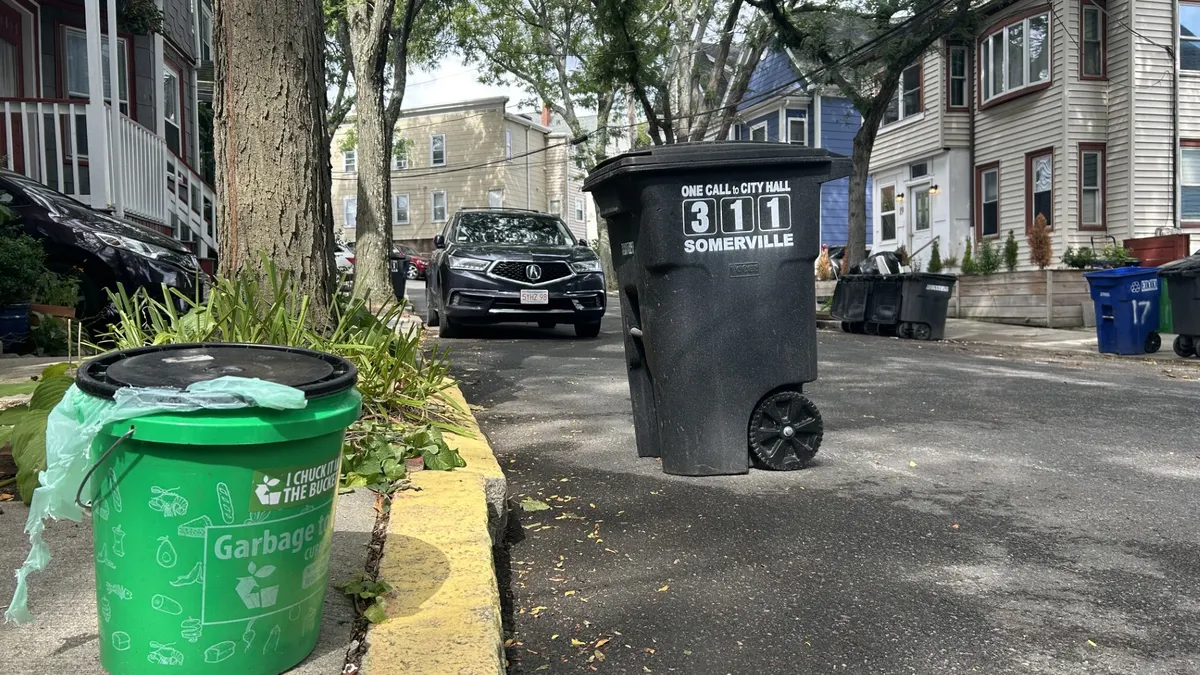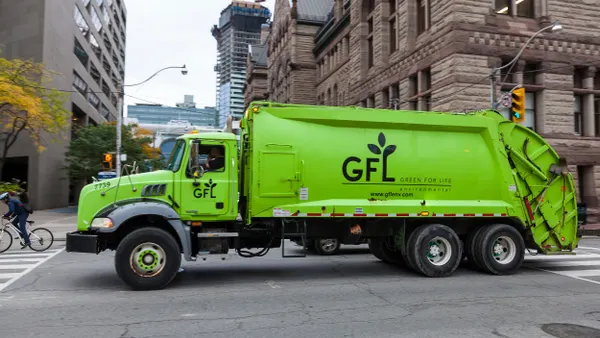Dive Brief:
- California released a draft of its updated Landfill Methane Rule on Tuesday. The proposal tightens numerous requirements related to landfill gas collection and control systems, including response times for leaks.
- The California Air Resources Board, the agency in charge of the rule, said the changes are in line with state targets intended to drive down methane emissions 40% below 2013 levels by 2030.
- CARB is scheduled to consider the proposal at its Nov. 20 meeting. The agency will accept written public comments between Sept. 26 and Nov. 10.
Dive Insight:
Landfill gas collection and control systems capture all manner of gases, including methane, but sometimes leak or are inefficient. As awareness of methane’s potency as a greenhouse gas has increased, some states have set regulatory thresholds or more stringent efficiency requirements to improve gas collection and avoid releasing methane into the atmosphere. That’s in contrast to federal landfill air emisisons requirements, which are based on non-methane organic compounds.
California’s landfill methane rule, adopted in 2010, was the first to put restrictions on landfill emissions based on methane rather than other gases. But in the years since, other states have begun to propose more stringent methane-based requirements that incorporate new technology.
States like Oregon, Washington, Maryland and Colorado have tightened their landfill rules in several ways to capture more greenhouse gas emissions. Those tactics include requiring the installation of gas collection and control systems earlier in a landfill's life and expanding those systems earlier into active cells. The states have also expanded the acceptance of drones as a suitable method of monitoring a landfill's surface for emissions leaks.
Colorado is in the advanced stages of implementing its first-ever state regulation for landfill methane, which builds on California’s precedent. Colorado had previously followed federal regulations, which critics say lag behind landfill operators’ capabilities. The state's proposal came up for a vote in August, but officials opted to push back their vote on it until their December meeting to give themselves more time for review.
California’s current rule, which hasn’t been updated in the 15 years since its adoption, covers 190 public and privately owned landfills. It requires 153 of those facilities to operate a gas collection and control system.
CARB estimated that under the update, local governments would likely face $6.2 million in new compliance costs in the first year after the rule is adopted and $6.1 million in each following year. It noted that such facilities can raise fees to cover the costs.
California's draft landfill methane rule incorporates certain provisions similar to Colorado's proposal. That includes requiring operators to promptly fix leaks if they are detected by third-party remote monitoring data. California was among the first states to test aerial and satellite monitoring of landfills, and CARB now believes the data collected via those efforts can help catch leaks in hard-to-monitor areas like a landfill's working face.
The rule would tighten the timeline by which landfill operators must respond to a leak, and it clarifies monitoring requirements for landfills with and without gas collection and control systems. Reacting to new technology in the market, the rule would also require using "handheld or drone-mounted laser scanners to identify leaks in inaccessible areas that are currently excluded from monitoring." The rule seeks to encourage the use of continuous wellhead monitoring technologies by reducing regulatory barriers and clarifying certain language as well.
The state’s existing landfill methane rule still includes some provisions that have yet to be adopted at the federal level, including requiring surface emissions monitors to walk the landfill face at 25-foot intervals rather than the federally required 100-foot intervals.











